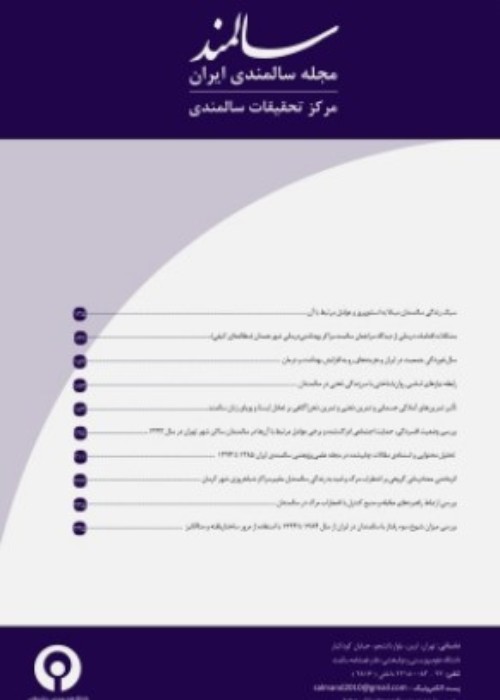An Epidemiological Study of the Infectious Diseases of Older Adults Hospitalized in Hospitals Affiliated to Birjand University of Medical Sciences, in 2016
Older adulthood refers to 65 years or older. In Iran, older people account for 8.5% of the whole population totaling 4.5 million people. Because of the disorders in the immune system, older adults catch infection diseases more frequently. Also, the initial presentation of infectious diseases is atypical in this age group. We performed an epidemiological investigation of infectious diseases in older adults hospitalized in hospitals affiliated to Birjand University of Medical Sciences during 2016.
This descriptive-analytic study included all the older patients (> 65 y) hospitalized in the Infectious Diseases Ward of Valiasr Hospital from April to December 2016. The study objectives were explained to the participants, who then gave their informed consent for study participation. A trained nurse completed a specific form for each patient based on his/her medical record. The form consisted of five sections: risk factors, clinical manifestations, paraclinical and radiology tests taken, internal and surgical interventions performed, and complications and outcomes. The data were analyzed in SPSS (version 19) using descriptive statistical tests and the Chi-square test. The significant level was set at α=0.05.
A total of 227 patients with a mean±SD age of 76.71±7.6 years (range: 65-97 y) participated in the study. Women accounted for 58.1% of the participants. Results showed that 8.8% of the subjects were smokers and 30.8% drug abusers, of whom 82.9% were oral abusers. Furthermore, their most common underlying diseases were hypertension (36.1%), diabetes (11.5%), heart problems (11%), and chronic pulmonary diseases (9.7%). The final diagnoses in hospitalized patients were pneumonia (52.4%), urinary tract infections (15%), septicemia (13.7%), influenza (9.7%), gastroenteritis (7.9%), and other diseases (1.3%). The most common organisms found in the patients’ cultures were S. aureus from blood cultures and E. coli from urine cultures.
most frequent infectious disease was pulmonary infection; therefore, it is suggested to observe individualistic health issues to prevent it.
- حق عضویت دریافتی صرف حمایت از نشریات عضو و نگهداری، تکمیل و توسعه مگیران میشود.
- پرداخت حق اشتراک و دانلود مقالات اجازه بازنشر آن در سایر رسانههای چاپی و دیجیتال را به کاربر نمیدهد.



